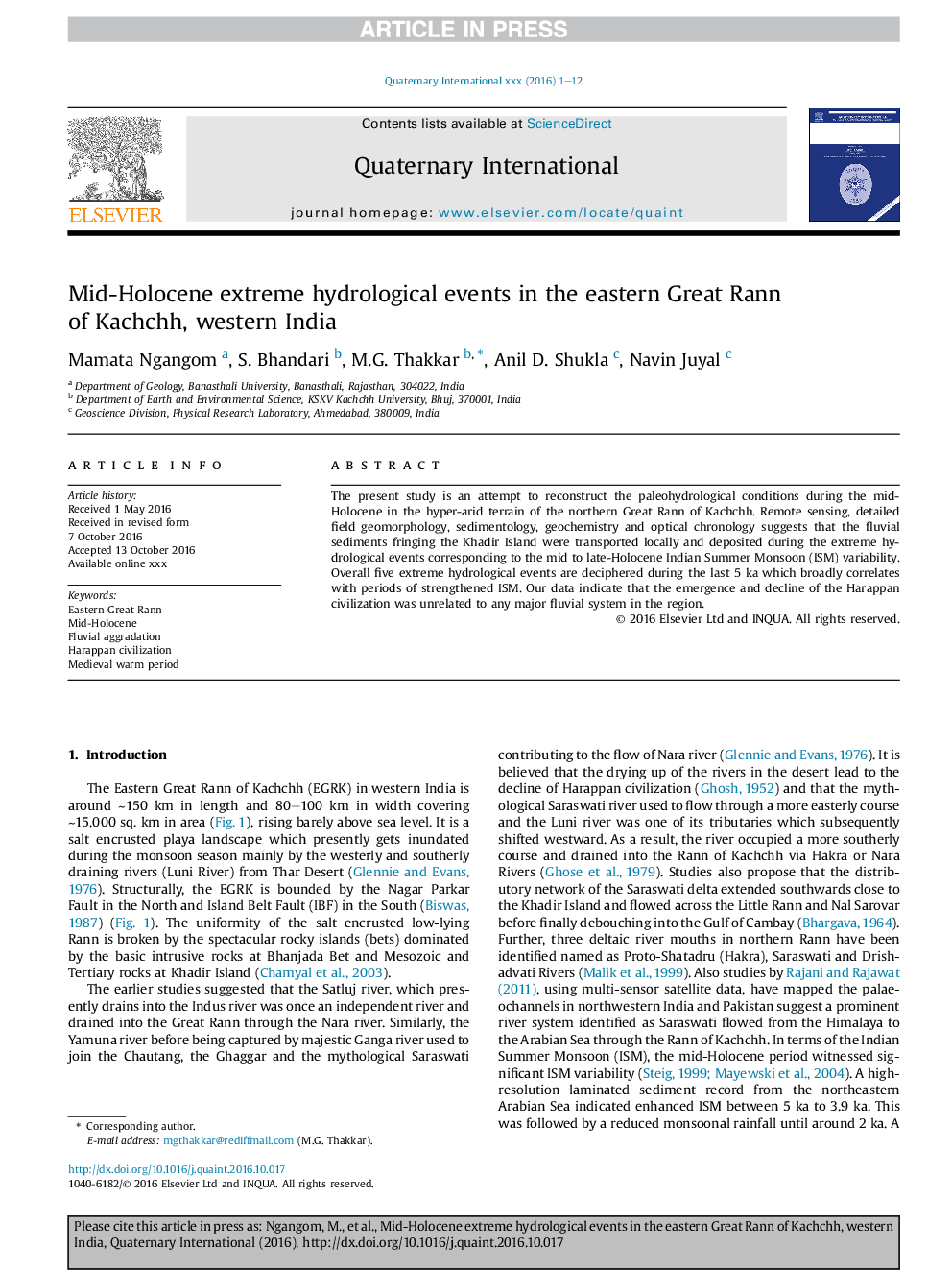| Article ID | Journal | Published Year | Pages | File Type |
|---|---|---|---|---|
| 5113138 | Quaternary International | 2017 | 12 Pages |
Abstract
The present study is an attempt to reconstruct the paleohydrological conditions during the mid-Holocene in the hyper-arid terrain of the northern Great Rann of Kachchh. Remote sensing, detailed field geomorphology, sedimentology, geochemistry and optical chronology suggests that the fluvial sediments fringing the Khadir Island were transported locally and deposited during the extreme hydrological events corresponding to the mid to late-Holocene Indian Summer Monsoon (ISM) variability. Overall five extreme hydrological events are deciphered during the last 5 ka which broadly correlates with periods of strengthened ISM. Our data indicate that the emergence and decline of the Harappan civilization was unrelated to any major fluvial system in the region.
Related Topics
Physical Sciences and Engineering
Earth and Planetary Sciences
Geology
Authors
Mamata Ngangom, S. Bhandari, M.G. Thakkar, Anil D. Shukla, Navin Juyal,
